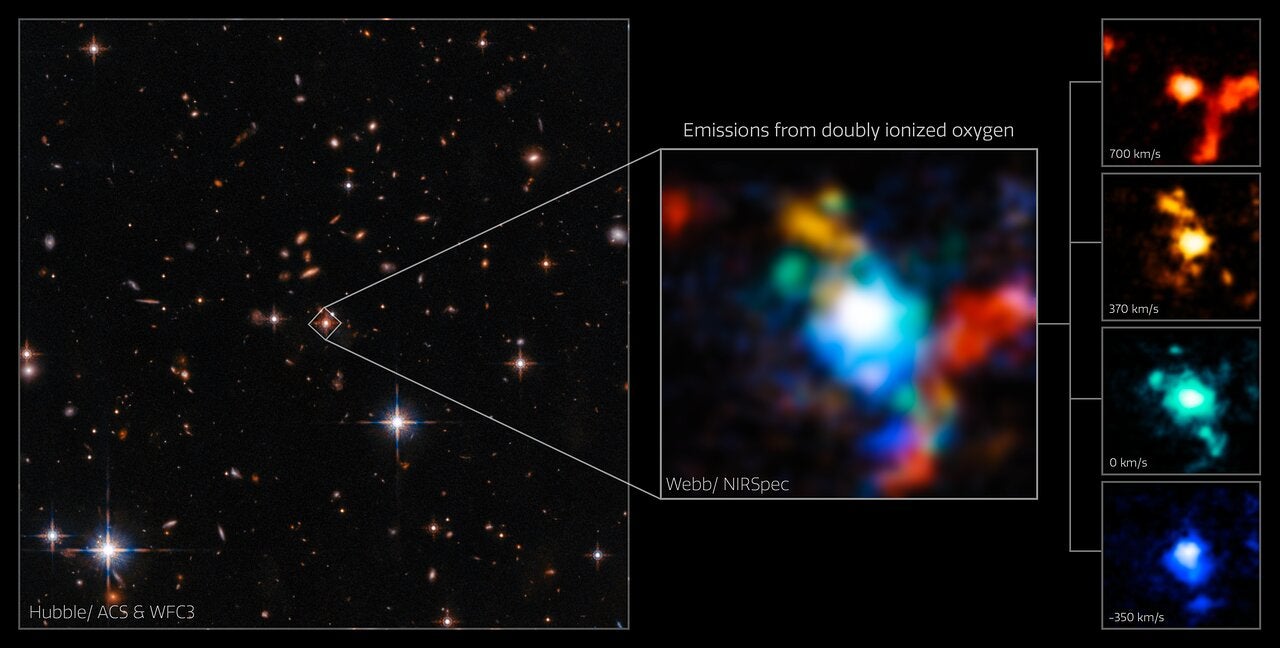The hits keep coming from Webb Space Telescope, which has now spotted a rainbow “knot” consisting of an extremely red quasar and a snarl of massive galaxies that existed about 11.5 billion years ago.
The remarkable image comes just a day after the telescope’s first view of the iconic Pillars of Creation, in a redux of the image of the gas clouds so famously captured by the Hubble Space Telescope in 1995.
Quasars are energetic centres of galaxies that appear very bright in the night sky. Quasars have supermassive black holes at their cores, ensconced in swirling superheated plasma. Occasionally, quasars let loose tremendous bursts of energy that ripple through the cosmos.
The quasar Webb recently imaged is named SDSS J165202.64+172852.3. It existed in the ancient universe, and the light we see from it travelled billions of years before hitting Webb’s mirrors.

OK, the Pillars of Creation looked a lot sharper in Webb’s eye than this quasar does. But the latter is much more distant and billions of years older than Earth. The light from the quasar is redshifted, meaning its wavelengths have literally been stretched by the expansion of the universe, shifting the light toward the redder side of the electromagnetic spectrum.
Since Webb sees the universe in infrared, the telescope was perfectly suited to scrutinize this quasar with its Near-Infrared Spectrograph (or NIRSpec).
Previous analysis of the quasar indicated that its host galaxy might be merging with some other, unseen galaxy. But the Webb image reveals a more complicated (and exciting) truth: The quasar’s galaxy is swirling around with at least three other galaxies. The NIRSpec image shows the quasar as seen through different colour filters of the instrument.
“Our first look at the data quickly revealed clear signs of major interactions between the neighbouring galaxies,” said Andrey Vayner, an astrophysicist at Johns Hopkins University and a member of the Webb team, in a European Space Agency release. “The sensitivity of the NIRSpec instrument was immediately apparent, and it was clear to me that we are in a new era of infrared spectroscopy.”
The galaxies are smooshed close enough together and are so complexly intertwined that they’re referred to as a galactic “knot” — it’s virtually impossible to disentangle the quasar’s light from that of the surrounding galaxies using ground-based telescopes.
Webb’s unparalleled vision is helping resolve some of those longstanding quandaries, which in turn have implications for scientists’ understanding of galaxy formation in the early universe and even the nature of dark matter haloes.
In recent years, Gizmodo has ended various articles with a reference to how future instruments — namely the Webb telescope — will allow us to scrutinize distant quasars that we couldn’t see in detail. Now, these days are upon us. Isn’t the future wonderful?
More: The World’s Largest Digital Camera Is Almost Ready to Look Back in Time
